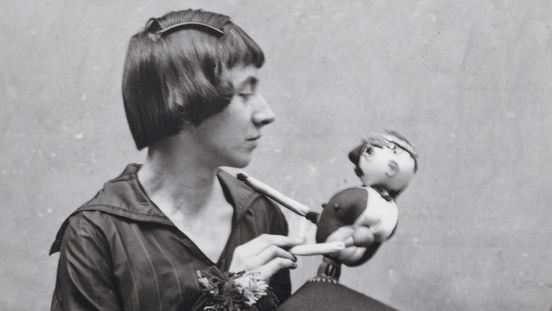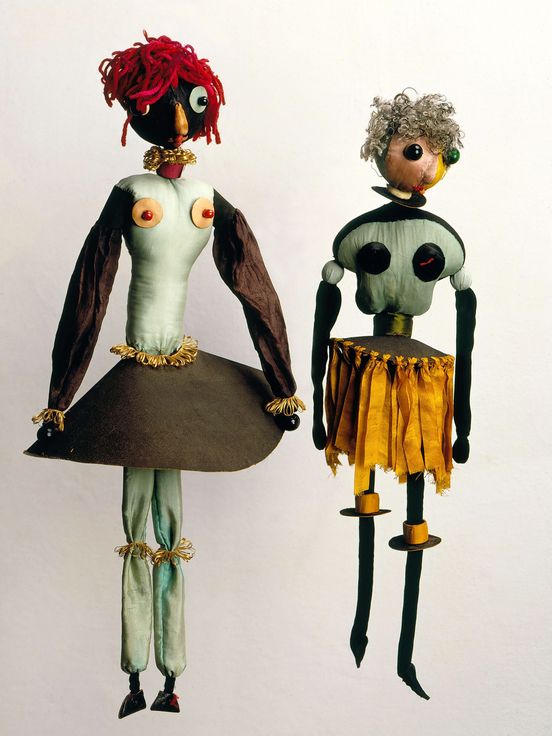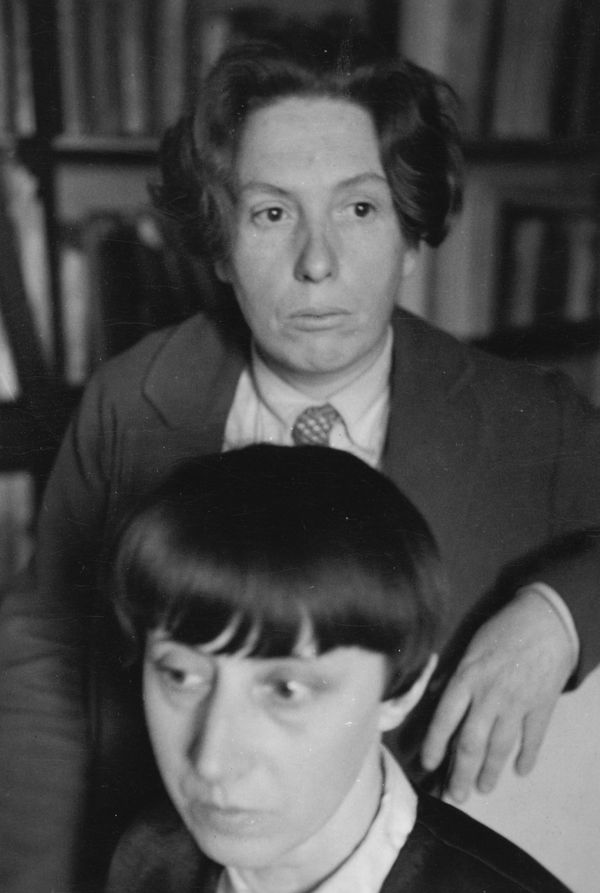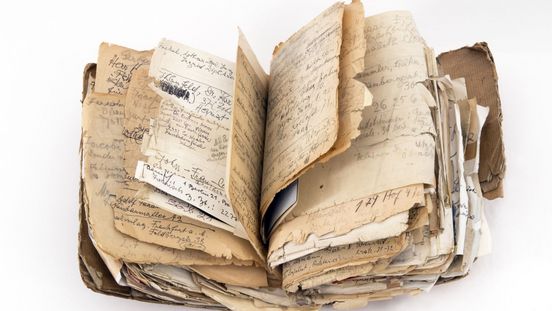

Life and loves
Hannah Höch was born in Gotha on 1 November 1889 and grew up in a well-heeled middle-class family. Becoming an artist was not part of the plan. She was already 22 when she moved to Berlin to study at the School of Decorative Crafts in Charlottenburg: “The Academy, which would have been the goal of my dreams, was a demand I did not even dare to formulate. A decorative craftswoman, of course, was not an artist,” Höch writes in her memoirs.
“The Academy, which would have been the goal of my dreams, was a demand I did not even dare to formulate. A decorative craftswoman, of course, was not an artist”
Hannah Höch
![Robert Sennecke, No Title (1. International Dada fair Berlin 1920) Photograph of the 1. International Dada fair Berlin 1920, [The participants left to right: Hannah Höch, Otto Schmalhausen, Raoul Hausmann, John Heartfield with child, Otto Burchard, Margarete and Wieland Herzfelde, N.N., N.N., Johannes Baader]](/assets/_processed_/b/d/csm_Museum-Berlin-Erste-Internationale-Dada-Messe-Berlin-1920_5dc059d163.jpg)
1. International Dada fair Berlin 1920, [The participants left to right: Hannah Höch, Otto Schmalhausen, Raoul Hausmann, John Heartfield with child, Otto Burchard, Margarete and Wieland Herzfelde, N.N., N.N., Johannes Baader]
In 1915 Höch met the artist Raoul Hausmann in Berlin. They embarked on a dramatic love affair. Together they were active in Dada circles from 1917, disrupting bourgeois and artistic conventions with their radical “anti-art”. But Hausmann did not want to leave his wife and daughter. Twice Höch underwent an abortion. The couple split in 1922.
From 1926 Höch lived with the Dutch writer Til Brugmann, first in The Hague, then in Berlin. In 1935 the two women went their separate ways, and probably not just for personal reasons. After the Nazis took power, it was dangerous to live openly in a same-sex partnership.

Portrait of Hannah Höch and Til Brugmann, photographed by Raoul Hausmann, 1931
© Berlinische Galerie / VG Bild-Kunst, BonnIsolation and loneliness
Under the Nazi regime the whole art world had to toe the line, so Höch withdrew. From 1938 to 1944 she was married to Kurt Heinz Matthies, 21 years her junior. Even so she felt increasingly isolated: “By about 1937 the radical loneliness had set in. The last of my friends had left and could not even be reached by letter. [...] Everyone distrusted everyone else. So one did not talk to anybody any more. One forgot how to speak.”
“By about 1937 the radical loneliness had set in. [...] Everyone distrusted everyone else. So one did not talk to anybody any more. One forgot how to speak.”
Hannah Höch
![[Translate to English:] Kunstverein für die Rheinlande und Westfalen, Faltblatt "Dada kommt", 1958 Abbildung eines Faltblatts zu einer DADA Ausstellung](/assets/_processed_/5/7/csm_Museum-Berlin-Faltblatt-Dada-kommt_a4d2ca4766.jpg)
[Translate to English:] Faltblatt "Dada kommt" zur Ausstellung "DADA : Dokumente einer Bewegung" vom 5.9 - 19.10.1958 in Düsseldorf
Late fame
The end of the Second World War brought eagerly awaited liberation for Höch, not least as an artist. From 1945 her work was often exhibited, and she won numerous prizes and distinctions. Scholars all over the world became aware of the copious collection of Dada material that Höch had salvaged from the National Socialist dictatorship in her little house in Heiligensee on the outskirts of Berlin. In 1978 Höch died at the age of 88. Eberhard Roters, the founding director of the Berlinische Galerie, managed to secure the documents in the estate of this exceptional artist for the collection. It is a unique fonds on the history of Dada and the 20th-century avant-garde.
Important works by Hannah Höch
-
Highlight
Adress book Hannah Höch
-
Highlight
"Dada Review" by Hannah Höch

![[Translate to English:] Hannah Höch, Dada-Rundschau, 1919 Collage by Hannah Höch, Gouache and watercolour on cardboard, 43,7 x 34,6 cm](/assets/_processed_/9/a/csm_Moderne-Kunst-Berlin-Hannah-Hoech-Dada-Rundschau_6b94bd0a89.jpg)